An Instagram hotspot in Tokyo is under threat, so snap it before it’s flattened
Designed by architect Kisho Kurokawa, the iconic Nakagin Capsule Tower in Tokyo has become something of an Instagram pilgrimage for architecture enthusiasts. But as the building fell into a state of disrepair, the Metabolist landmark has long been in danger of demolition and the final decision is to be made by the building’s management society by vote
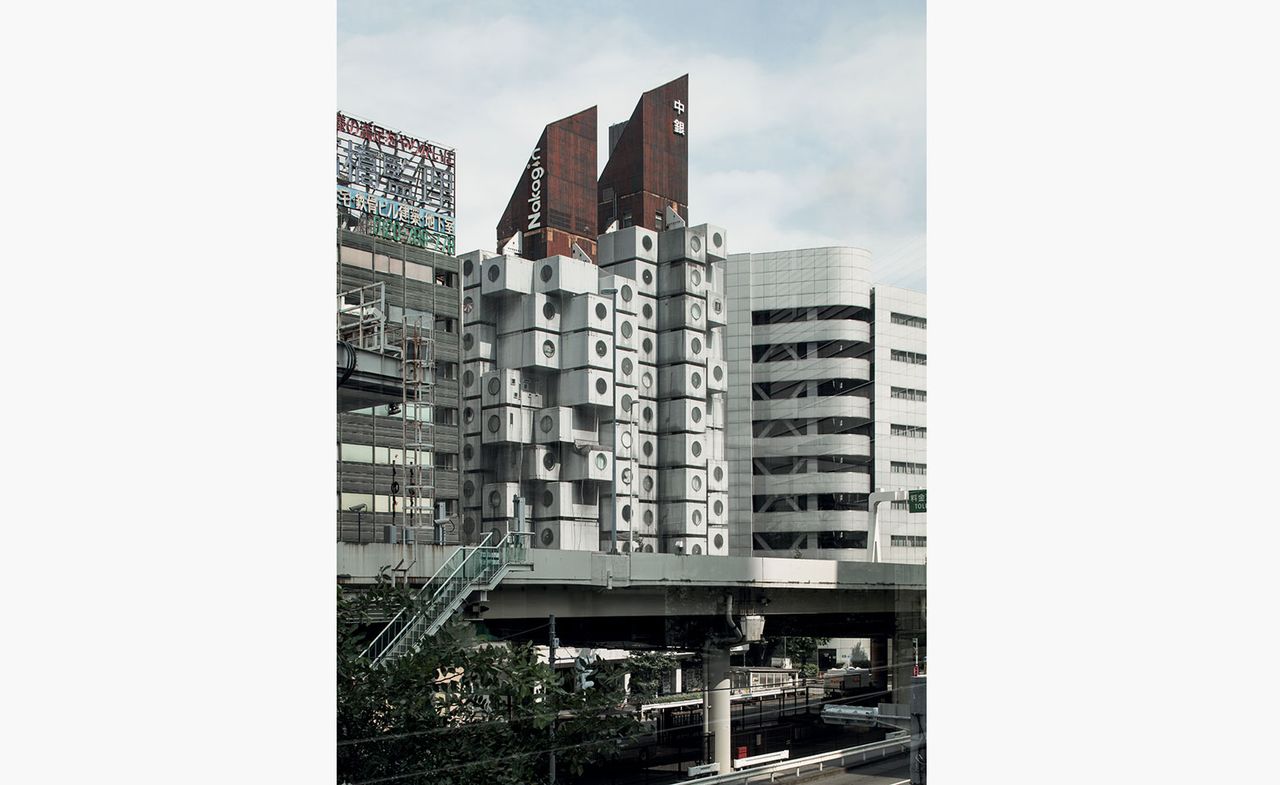
The iconic Nakagin Capsule Tower has been in danger of demolition for more than a decade, but it seems decision time is upon us, as the verdict surrounding its future will soon be announced in the coming year. The landmark building designed by architect Kisho Kurokawa and completed in 1972 is something of a symbol for metabolism, the post-war Japanese architecture movement that explored modern architecture, especially of high density, through the lens of organic growth.
The tower sits in Ginza, right in the heart of Tokyo, a locale originally conceived to target elite businessmen seeking conveniently located private or rented accommodation or offices, towards the end of what was a high growth period for Japan. Kurokawa planned to change each capsule every 25 years, but his plan never materialised due to logistical obstacles (owners timing preferences and financial complications). As a result, while some 100 of the 140 capsules are still in use, some as residences, others as office space or creative studios, the remaining 40 are abandoned and lie in ruins.
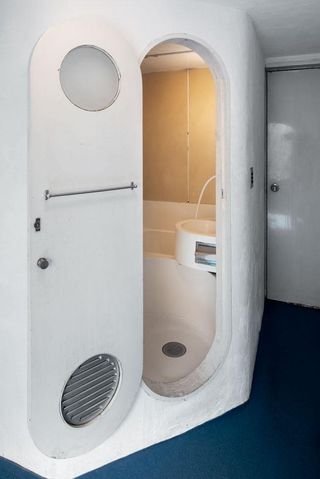
The compact bathrooms come with small bathtubs
Back in 2007 (also the year of Kurokawa’s sad passing), an announcement was made by the building’s management society (which comprises of the owners) that the Nakagin Capsule Tower was to be demolished to give way to a new apartment building, but the project’s developer went bankrupt because of the global economic downturn at the time; and since then, the tower’s fate has been up in the air. This led to a huge rift between owners (capsules were sold individually in the past), who were eventually divided into two camps – one to save the tower, because of its architectural value, and one to demolish and rebuild, cashing in on the land value.
‘We are in a critical situation, but there is a last hope, and I’m trying to make it happen,' says Tatsuyuki Maeda, head of the ‘save’ group, arguing for the building’s preservation and restoration. The final decision will be made by the building’s management society through a vote. Maeda has been slowly acquiring capsules (15 are currently in his possession), trying to increase his voting power and promote owner change to support his cause.
According to him, the Nakagin group (the original land owner) gave up on trying to resolve this situation and sold their title and some of the capsules that they owned to a real estate company. The real estate company proceeded to keep buying more capsules and now owns around 70 of them, which gives them majority-voting rights. Furthermore, they blocked future capsule trading, putting Maeda’s side to a huge disadvantage.
‘I like to put the zeitgeist into my work, and be fulfilled when later generations understand how my time was by seeing my work'
Kisho Kurokawa
‘Currently, a European company is showing interest in buying outright the land and capsules, effectively saving the building. We plan to soon remove one of the capsules to test the strength of the main axis, which holds each capsule through four bolts. It also helps to estimate the costs for exchanging all the capsules for new ones in the future. I had also been negotiated with some Japanese companies, but they all declined taking this on. We, the capsule owners in the ‘save’ party want to keep our capsules of course, but if this European company can keep this building and replace the capsules to new ones, we’d be happy to leave and let them do it.'
In Japan, neither the government nor local authority usually intervene in the affairs of private property, and in order to register a building as a protected monument, they need to be at least 50 years old. The Nakagin Capsule Tower is now 48 years old, but even when it becomes 50, permission is still required of all the owners in order to submit it for monument status. ‘Nothing can be done with this scattered divisional ownership situation. Thanks to that, it has been possible for the building to survive until now, but it also means that it cannot be restored. If the Nakagin group had full ownership, this building would have been gone twenty years ago,' says Maeda.
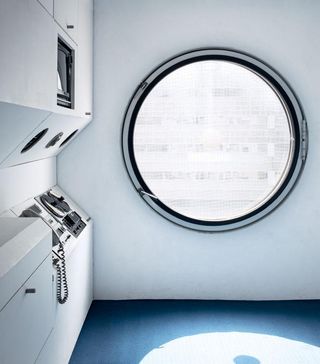
The round windows can’t be opened (they used to come with blinds but these are no longer made)
Summer is too hot and winter is too cold, the original air conditioning system and the hot water supply have long been broken, but it’s still great having a space in Kisho Kurokawa’s masterpiece. I cannot do anything more than pay my rent, so I have to go with the flow. But when they decide to demolish this building, I’d like to take this round window with me as a memento,' says Takumi Miyamoto, who moved in his capsule this year and uses it as the base for his interior design business.
To see the building in the flesh is no doubt fascinating for the architecture enthusiast, but also shocking. Some of the rooms are damaged badly and have long been abandoned, their metal doors rotten and broken, ceilings and walls peeling off and the asbestos inside the walls revealed. Miyamoto says to eliminate the asbestos alone and restore the damage requires so much money (more than a million yen just for the 2m x 5m capsule ceiling) that some of the capsule owners are simply waiting for it to be demolished.
So will Kurokawa's metabolist gem soon be a long lost part of architectural history? Tokyo is famous for its scrap and re-build culture, and that’s also part of the urban ‘organic growth’ the Metabolists talked about. ‘I like to put the zeitgeist into my work, and be fulfilled when later generations understand how my time was by seeing my work,' once said Kurokawa in an old interview.
Wallpaper* Newsletter
Receive our daily digest of inspiration, escapism and design stories from around the world direct to your inbox.
-
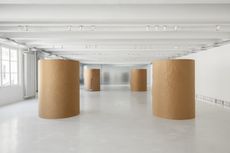 What is the role of fragrance in contemporary culture, asks a new exhibition at 10 Corso Como
What is the role of fragrance in contemporary culture, asks a new exhibition at 10 Corso ComoMilan concept store 10 Corso Como has partnered with London creative agency System Preferences to launch Olfactory Projections 01
By Hannah Tindle Published
-
 Jack White's Third Man Records opens a Paris pop-up
Jack White's Third Man Records opens a Paris pop-upJack White's immaculately-branded record store will set up shop in the 9th arrondissement this weekend
By Charlotte Gunn Published
-
 Designer Marta de la Rica’s elegant Madrid studio is full of perfectly-pitched contradictions
Designer Marta de la Rica’s elegant Madrid studio is full of perfectly-pitched contradictionsThe studio, or ‘the laboratory’ as de la Rica and her team call it, plays with colour, texture and scale in eminently rewarding ways
By Anna Solomon Published
-
 Explore the Perry Estate, a lesser-known Arthur Erickson project in Canada
Explore the Perry Estate, a lesser-known Arthur Erickson project in CanadaThe Perry estate – a residence and studio built for sculptor Frank Perry and often visited by his friend Bill Reid – is now on the market in North Vancouver
By Hadani Ditmars Published
-
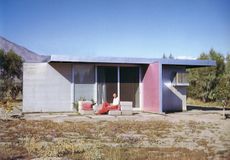 Take a deep dive into The Palm Springs School ahead of the region’s Modernism Week
Take a deep dive into The Palm Springs School ahead of the region’s Modernism WeekNew book ‘The Palm Springs School: Desert Modernism 1934-1975’ is the ultimate guide to exploring the midcentury gems of California, during Palm Springs Modernism Week 2025 and beyond
By Ellie Stathaki Published
-
 Meet Minnette de Silva, the trailblazing Sri Lankan modernist architect
Meet Minnette de Silva, the trailblazing Sri Lankan modernist architectSri Lankan architect Minnette de Silva is celebrated in a new book by author Anooradha Iyer Siddiq, who looks into the modernist's work at the intersection of ecology, heritage and craftsmanship
By Léa Teuscher Published
-
 Palm Springs Modernism Week 2025: let the desert architecture party begin
Palm Springs Modernism Week 2025: let the desert architecture party beginPalm Springs Modernism Week 2025 launches on 13 February, marking the popular annual desert event’s 20th anniversary, celebrated this year through more midcentury marvels than ever
By Carole Dixon Published
-
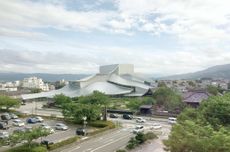 And the RIBA Royal Gold Medal 2025 goes to... SANAA!
And the RIBA Royal Gold Medal 2025 goes to... SANAA!The RIBA Royal Gold Medal 2025 winner is announced – Japanese studio SANAA scoops the prestigious architecture industry accolade
By Ellie Stathaki Published
-
 Inside Bell Labs, the modernist vision behind Severance's minimalist setting
Inside Bell Labs, the modernist vision behind Severance's minimalist settingWe explore the history of Bell Labs - now known as Bell Works - the modernist Eero Saarinen-designed facility in New Jersey, which inspired the dystopian minimalist setting of 'Severance'
By Jonathan Bell Published
-
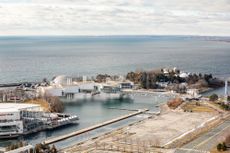 We zoom in on Ontario Place, Toronto’s lake-defying 1971 modernist showpiece
We zoom in on Ontario Place, Toronto’s lake-defying 1971 modernist showpieceWe look back at Ontario Place, Toronto’s striking 1971 showpiece and modernist marvel with an uncertain future
By Dave LeBlanc Published
-
 Tour 21 lesser-known modernist houses in Europe
Tour 21 lesser-known modernist houses in EuropeTake a tour of some of Europe's lesser-known modernist houses; architectural writer and curator Adam Štěch leads the way, discussing the 20th-century movement's diversity under a single vision
By Adam Štěch Published